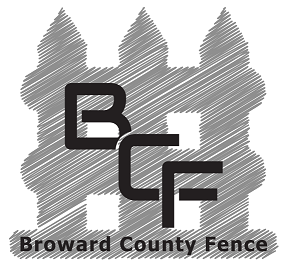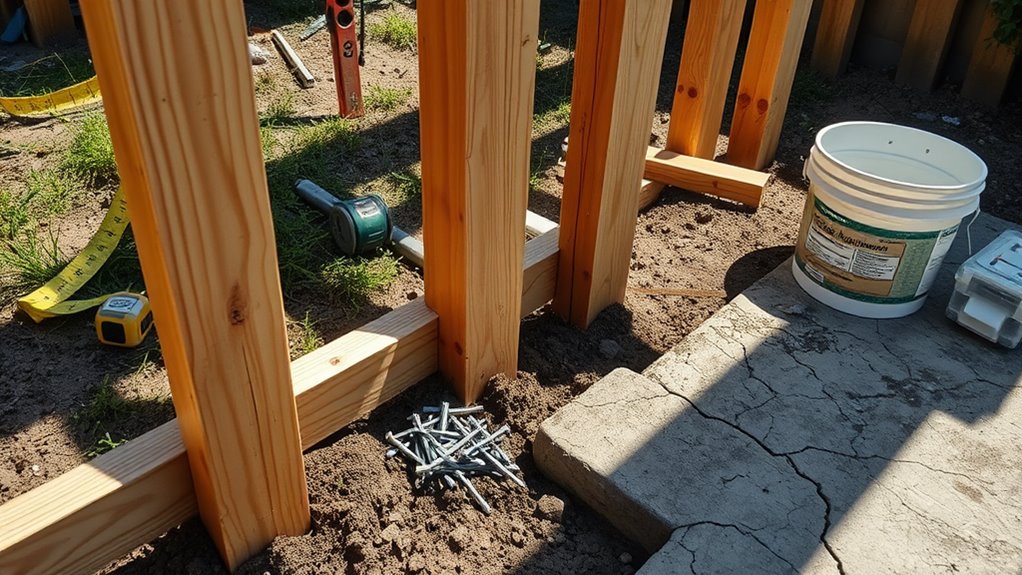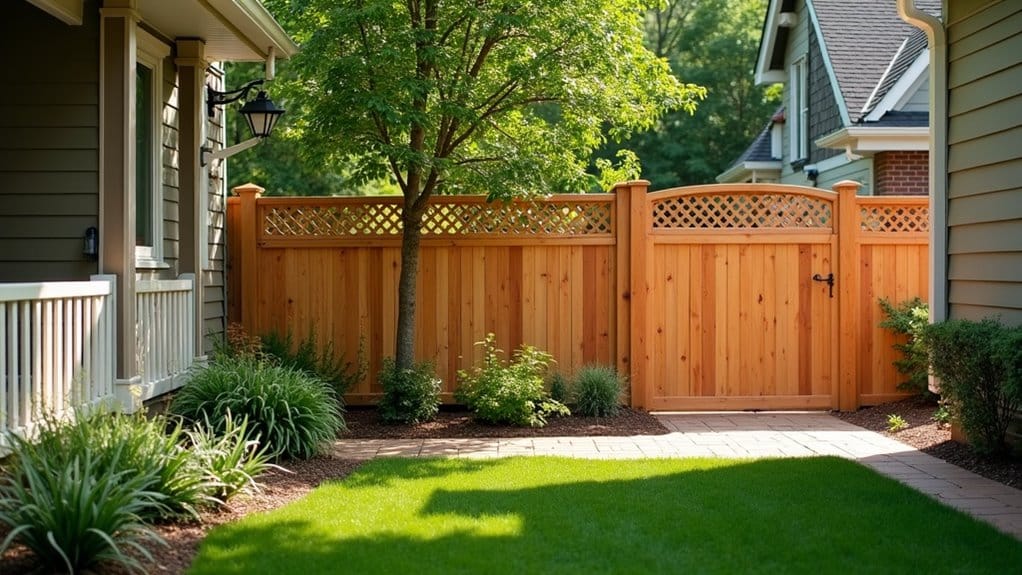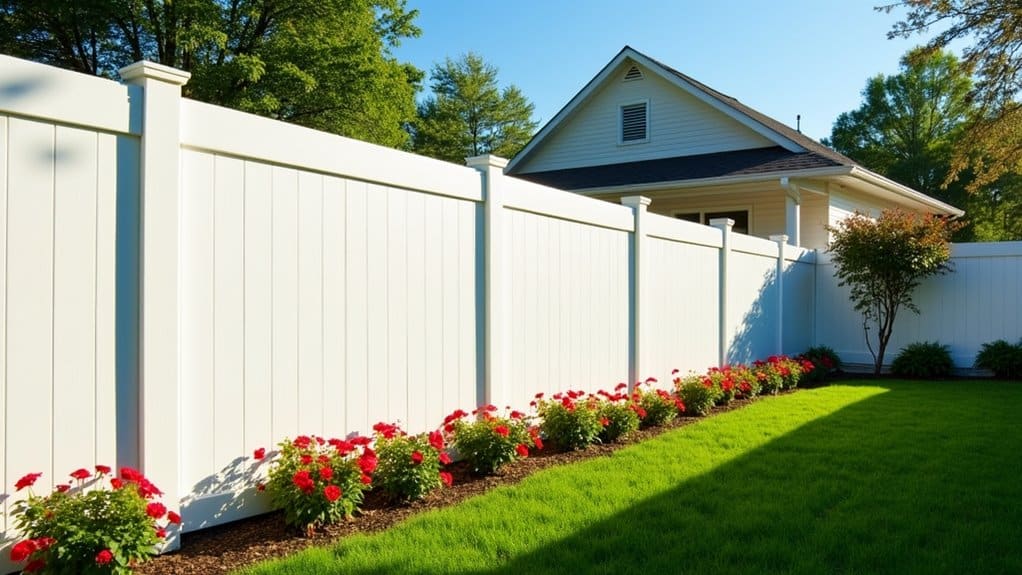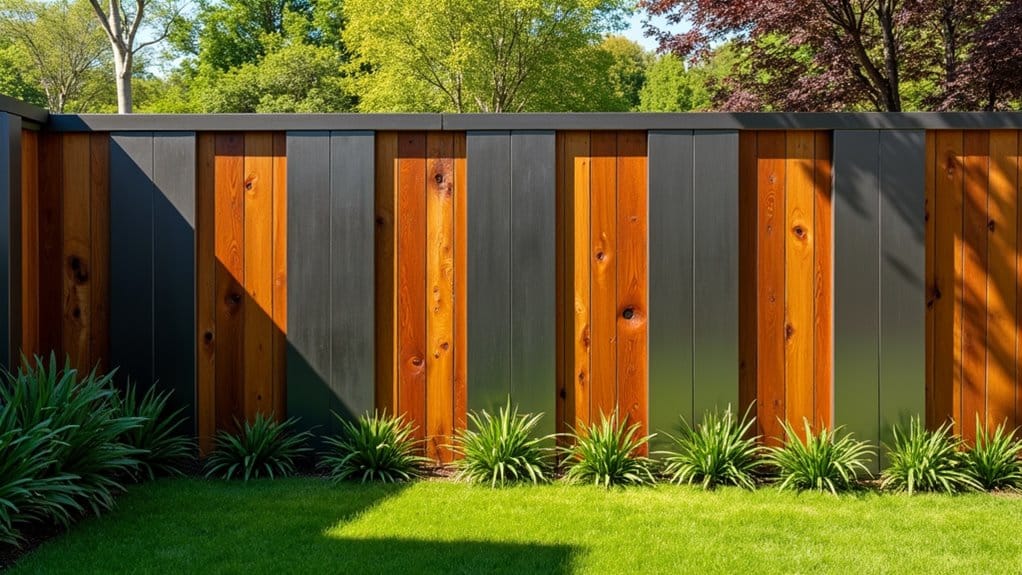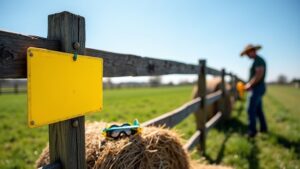To avoid mistakes during fence installation, make sure to budget properly for materials and labor, including hidden costs like permits. Take your time with prep work and measurements to avoid disputes. Always check local regulations to ensure compliance and communicate clearly with your contractors. Choose strong, suitable materials and prepare your ground well. Rushing the installation can cause problems later. Stick around for more tips on a successful fence project.
Key Takeaways
- Don't underestimate costs for materials and labor; it can lead to overspending and budget issues.
- Always obtain necessary permits to avoid fines and complications down the line.
- Measure property lines accurately to prevent disputes with your neighbors.
- Take your time with ground preparation; rushing can lead to unstable fences and future repairs.
- Avoid low-quality materials; they may save you money now but can lead to higher maintenance costs later.
Inadequate Budgeting for Materials and Labor
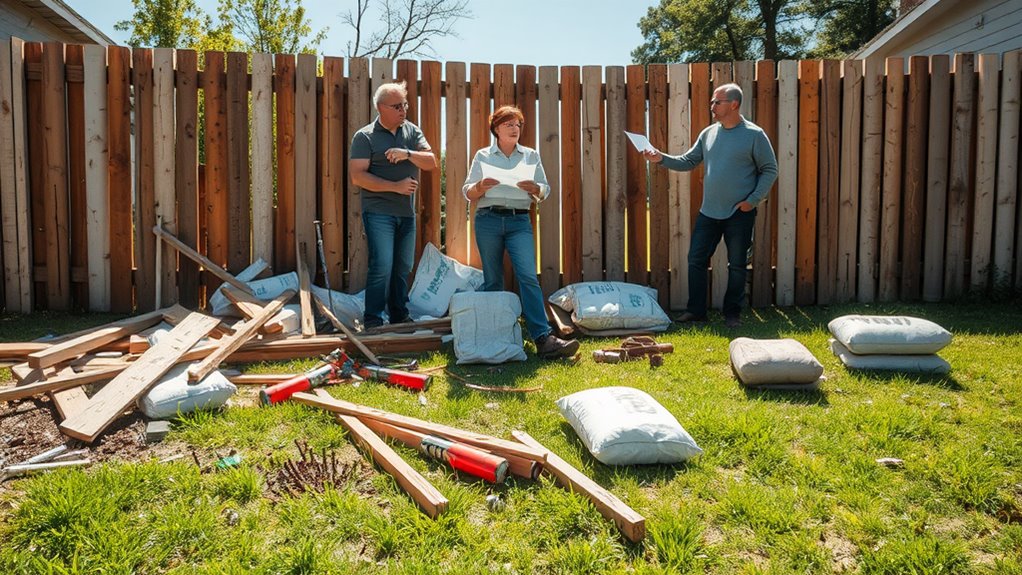
One major pitfall in fence installation is underestimating your budget for materials and labor. Costs can vary significantly based on the type of material you choose—wood, vinyl, or metal. While higher-quality materials may require a bigger initial investment, they can save you money on repairs later. Additionally, understanding all costs involved helps prevent overspending on materials and labor. Labor costs also vary depending on project complexity and location, with some contractors charging up to $50 per hour. If you decide to go the DIY route, be aware that mistakes can lead to extra expenses if you need to hire a professional to fix them. Additionally, don't overlook hidden costs like tools and permits.
Insufficient Time Allocation for Installation
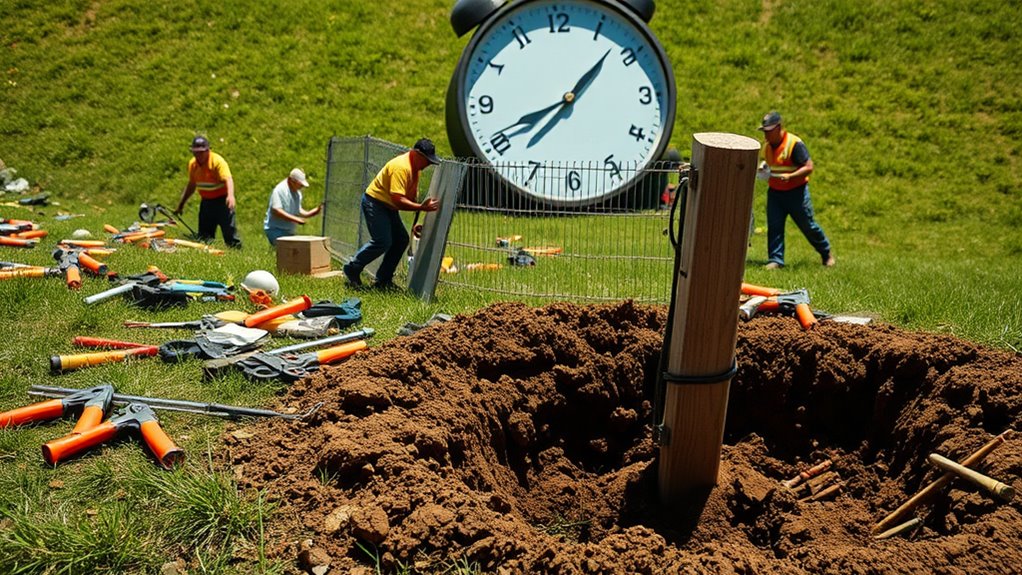
Underestimating the time needed for fence installation can lead to costly mistakes. Effective time management is crucial. Rushing the prep work might result in incorrect layouts or violations of local regulations. For example, take time to evaluate weather and terrain to prevent issues later on. Accurate measurements are essential when choosing materials quickly, as this can lead to poor durability and more maintenance down the line. Additionally, consider the impact of adverse weather conditions on your timeline to plan accordingly.
During installation, don't rush the post-setting process; giving it enough time ensures stability. After installation, allow time for testing and inspection to catch any hidden problems early. Lastly, include time buffers in your schedule for unexpected delays, making the installation process smoother and more successful.
Inaccurate Yard Measurements
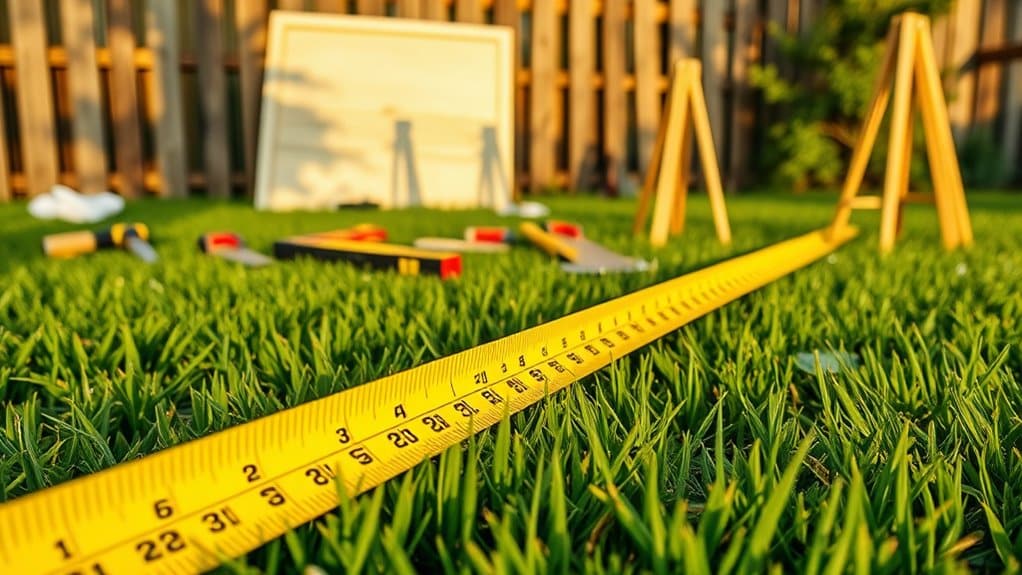
Accurate yard measurements are crucial for a successful fence installation because they affect your planning and material needs.
Using tools like a measuring wheel or laser distance meter ensures precision and helps you avoid costly mistakes. For instance, even a minor error can lead to disputes with neighbors or unexpected expenses. Ensuring you have accurate measurements helps prevent fence placement disputes that can arise from miscalculations. Additionally, understanding local regulations and covenants can guide your measurements to ensure compliance with city laws.
Keep your measurements accurate to prevent these issues.
Importance of Accurate Measurements
Accurate measurements are crucial when installing a fence. If your yard measurements are off, you risk creating uneven sections, which can look unappealing and function poorly.
Mistakes in measurement can lead to extra costs, as you might've to buy more materials or redo parts of the fence. Furthermore, misaligned fences can create boundary disputes with neighbors if they cross property lines.
It's also important to follow local regulations; improper installations could result in fines or required changes. Additionally, obtaining a property survey can help ensure you are aware of your exact boundaries and avoid potential conflicts with neighbors.
To avoid these issues, make sure to consult land records and double-check your measurements for a successful, long-lasting fence installation.
Tools for Measurement Accuracy
Getting accurate measurements is crucial for fence installation, and the right tools can make a significant difference.
Start with a sturdy tape measure of at least 25 feet for most projects. For longer distances, a measuring wheel is a handy option as it tracks footage while you walk along the fence line. You can also use GPS apps for precise location measurements, but always double-check their accuracy.
Don't forget additional tools like levels, marking paint, and string lines to ensure everything is straight and aligned. Additionally, consider the types of fencing you plan to install, as different materials may require specific measurement techniques for optimal results.
Consequences of Miscalculations
Miscalculating yard measurements can lead to costly problems with your fence.
If you misplace the fence, it can damage your property and result in fines for zoning violations. Overestimating space means buying extra materials you don't need, wasting money.
This mistake can also increase labor costs and delay your project. To avoid these issues, measure accurately and double-check your calculations.
Accurate measurements ensure your fence is sturdy, looks good, and meets local regulations, saving you from expensive fixes and potential legal troubles.
Ignoring Local Regulations and Permits
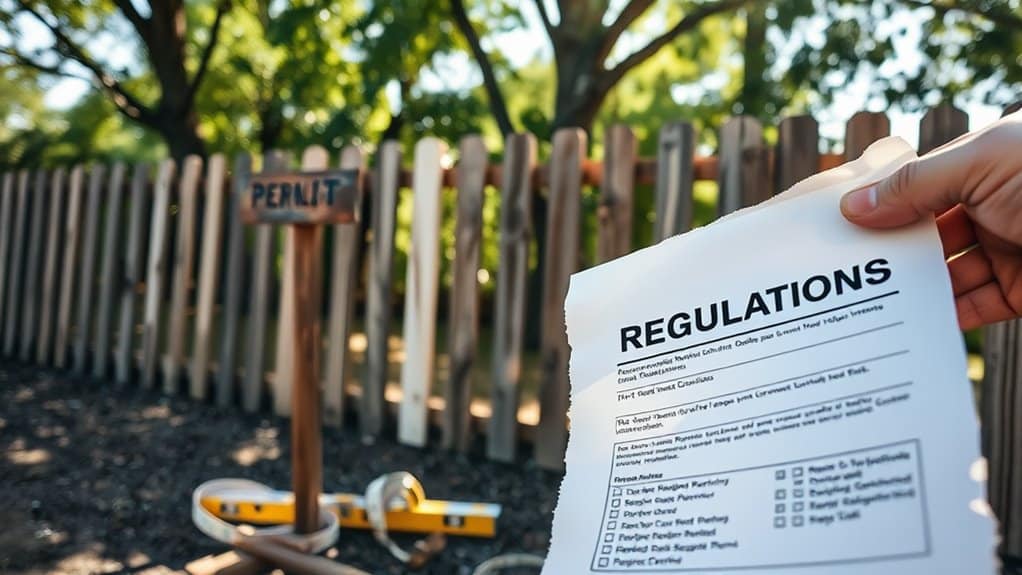
Ignoring local regulations and permits can create serious problems during fence installation. To avoid mistakes, here are four essential points to consider:
- Check Permit Requirements: Find out if you need a permit for your fence, as rules differ by location.
- Know Height Restrictions: Taller fences may need permits, so ensure your design meets local height limits.
- Review Material Restrictions: Some materials might be banned in residential areas, affecting your options.
- Consult Zoning Charts: These documents offer vital info on placement and compliance, especially near protected areas.
Staying informed can save you time, money, and frustration!
Poor Communication With Contractors and Suppliers
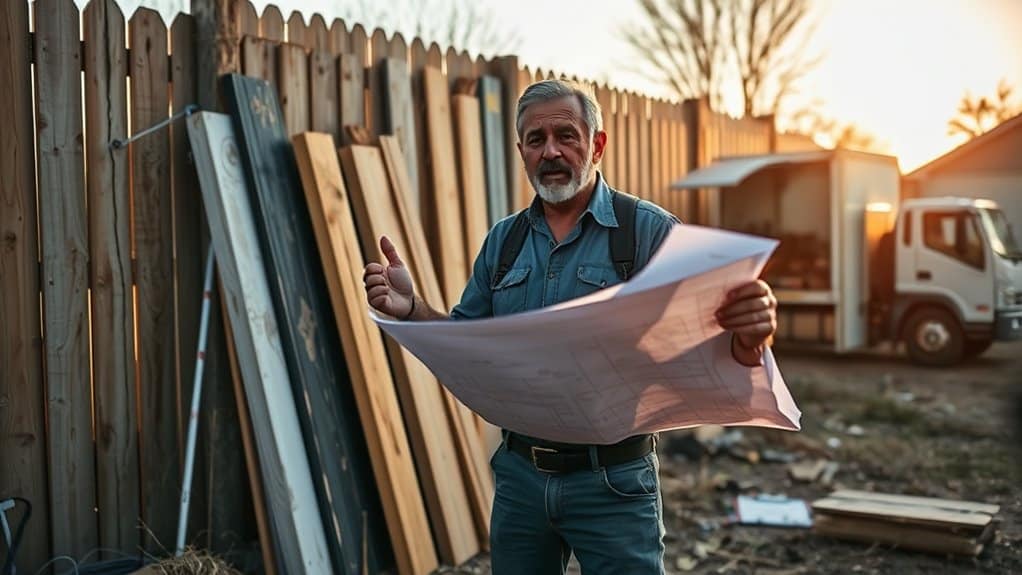
Effective communication with contractors and suppliers is crucial to prevent mistakes during fence installation.
Clearly outline project expectations from the beginning, so everyone knows their roles. For example, if a contractor is responsible for materials, make sure they confirm delivery dates.
Regular updates on progress can help catch issues early and keep the project moving smoothly.
Clear Project Expectations
When starting a fence installation project, setting clear expectations with contractors and suppliers is crucial for success.
Here are four key areas to focus on:
- Budget: Share your budget upfront to avoid unexpected costs later.
- Materials: State your preferred materials early to ensure they meet your style and durability needs.
- Timeline: Talk about realistic deadlines to keep everyone on track.
- Quality: Clearly outline the quality standards you expect to ensure satisfaction with the finished product.
Regular Progress Updates
Effective communication is key to keeping your fence installation project on track. It builds trust and reduces misunderstandings.
To enhance communication with contractors and suppliers, make regular updates a priority. Use automated reporting tools and clear channels to share information efficiently.
Schedule regular site visits to keep everyone informed and educate clients on the communication process to ensure their engagement.
Set realistic timelines and be transparent to avoid delays. Stay flexible in your communication methods and welcome feedback from all parties.
Shallow Post Holes and Inadequate Spacing
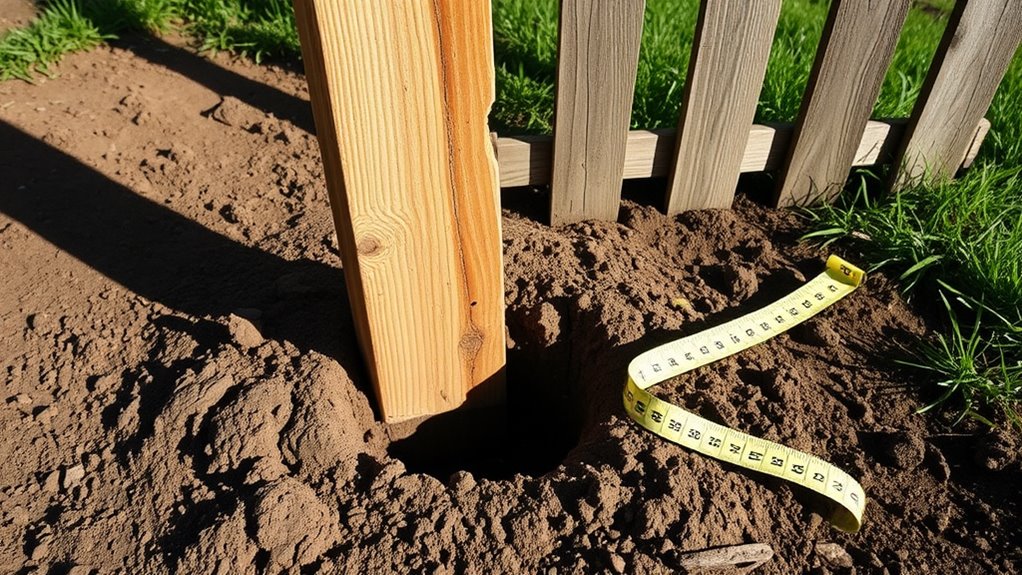
To ensure your fence remains sturdy, it's crucial to dig deep post holes and space them correctly. Shallow holes can lead to leaning or sagging, while inadequate spacing weakens the structure. Here's what you need to know:
- Post Hole Depth: Dig holes at least one-third the length of the post, plus some extra for drainage.
- Post Spacing: Aim for posts to be about 8 feet apart for most residential fences.
- Soil Considerations: Adjust the depth based on your soil type; sandy soil may need deeper holes.
- Alignment: Make sure posts are evenly spaced for better stability and durability.
Focusing on these points will help your fence last longer and withstand the elements.
Inappropriate Material Choice and Quality

Choosing the right materials for your fence is crucial. The wrong choice can lead to costly repairs later. Evaluate options based on durability, maintenance, and environmental impact. Think about how materials perform in your local climate and their sustainability.
Here's a quick comparison:
| Material Type | Durability | Environmental Impact |
|---|---|---|
| Wood | Moderate | High (if untreated) |
| Vinyl | High | Low |
| Metal | Variable | Moderate |
Check for visible damage and ensure materials meet regulations. While high-quality options may cost more upfront, they often save you money in the long run. Making smart choices helps your fence last longer and reduces its environmental impact.
Incorrect Property Line Assessment
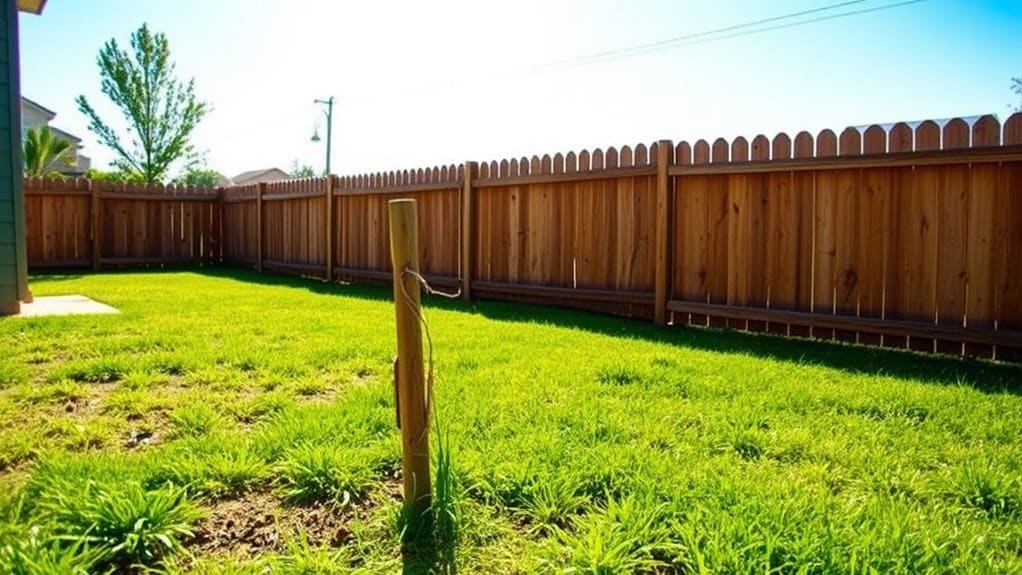
Before installing your fence, check your property lines to prevent costly errors.
Review any agreements with neighbors and secure the required permits to avoid disputes later.
These steps ensure your fence is correctly positioned and meets local regulations.
Verify Property Boundaries
Verifying property boundaries is crucial before installing a fence to avoid legal and financial complications.
Here are some straightforward steps to ensure accuracy:
- Check Official Documents: Always review your property deed and survey for clear boundary details.
- Look for Markers: Identify any existing markers like stakes or iron rods that indicate property lines.
- Consult Local Records: Visit your local county office for the latest surveys and property deeds.
- Hire a Professional: If you're uncertain, consider hiring a licensed surveyor for accurate boundary identification.
Consult Neighbor Agreements
After confirming your property boundaries, talk to your neighbors about your fence plans. Clear communication is key to avoiding disputes.
Let them know what you intend to do and ensure they agree. Don't assume they'll share costs; discuss and write down any agreements to avoid misunderstandings.
If you already have shared fence agreements, review them to ensure everyone is on the same page. Clearly outline boundaries and responsibilities in writing to protect both parties.
Ignoring your neighbors can lead to conflicts over looks or property lines, which might escalate into legal issues. Prioritize open dialogue and keep detailed records of agreements to foster good neighborly relations.
Obtain Necessary Permits
Obtaining the necessary permits is essential for a smooth fence installation. Skipping this step can result in expensive issues down the line.
Here are four straightforward steps to follow:
- Check Local Rules: Look up your town's regulations on fence height, materials, and where it can be placed.
- Get a Property Survey: A survey will help you locate your property lines accurately.
- Inform Local Officials: Let your local authorities know about your fence project to keep everything above board.
- Be Ready for Inspections: After installation, be prepared for inspections to ensure everything meets the required standards.
Inadequate Ground Preparation
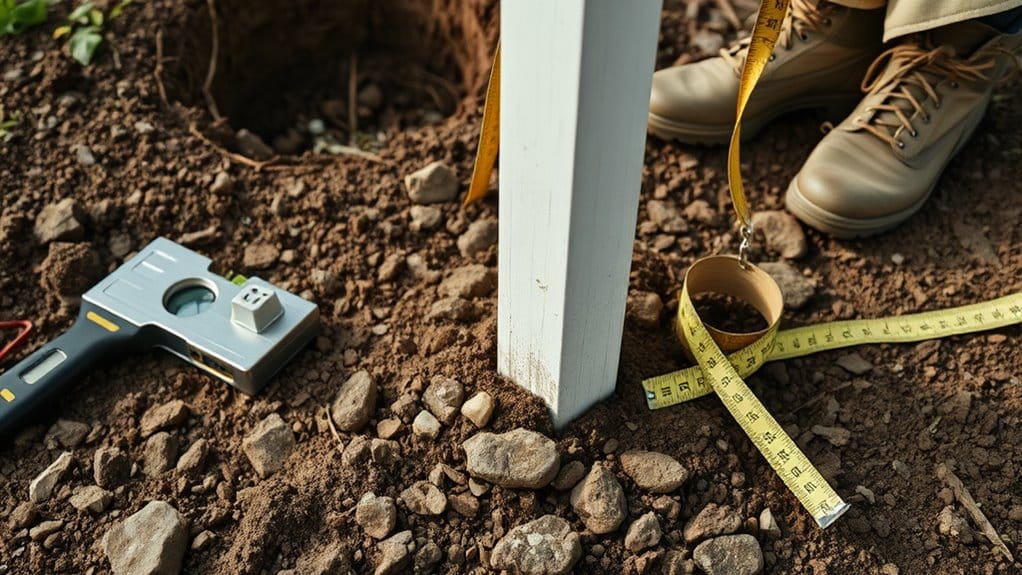
A common mistake homeowners make when installing a fence is skipping ground preparation. Proper inspection and soil testing are vital for a solid foundation. Clear away debris and check for rocks, roots, or vegetation to avoid future issues. An uneven ground can lead to a crooked fence that doesn't function well.
| Issue | Consequences | Solution |
|---|---|---|
| Neglected debris | Crooked posts | Clear the area |
| Unchecked soil type | Weak structure | Test the soil |
| Poor drainage | Erosion and damage | Improve drainage |
Taking the time to prepare the ground will result in a strong, attractive fence that lasts.
Rushed Installation and Neglected Maintenance
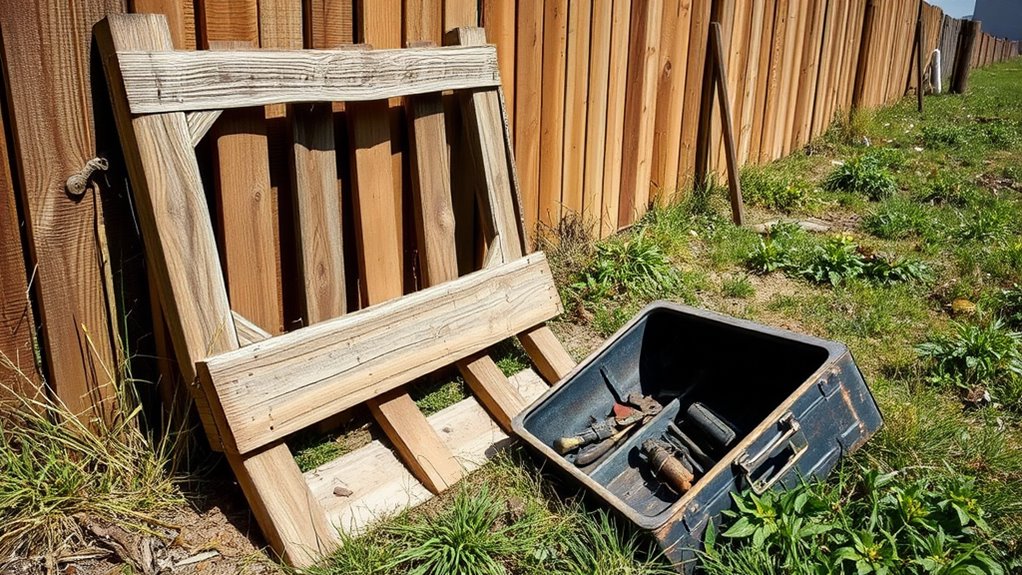
Rushing your fence installation can lead to long-term problems. Here are common issues to avoid:
- Inaccurate Measurements: Skipping precise measurements can result in an uneven fence.
- Improper Post Placement: Misplaced posts can make your fence unstable and saggy.
- Neglected Maintenance: Failing to maintain your fence speeds up wear and tear, increasing repair costs.
- Increased Liability: Weak fences can create safety hazards, leading to accidents.
Invest time in proper planning and maintenance to enhance your fence's durability and protect your investment.
Prioritize quality to prevent future issues.
Frequently Asked Questions
How Can I Ensure My Fence Meets Local Building Codes?
To ensure your fence complies with local building codes, start by checking the regulations for permits, height limits, and material requirements. Reach out to your local planning department for specific guidelines. Don't forget to review any Homeowners Association rules that might apply. For example, some neighborhoods might have restrictions on fence height or style. By doing this homework upfront, you can avoid costly adjustments later.
What Is the Best Way to Communicate With My Contractor?
"Good fences make good neighbors." To ensure effective communication with your contractor, establish clear expectations from the start. Use emails, meetings, and phone calls to keep everyone updated and address any concerns promptly during the project.
How Do I Determine the Right Fence Height for My Property?
To find the right fence height for your property, check local regulations, think about your need for privacy or security, and ensure it fits within your property lines. For example, if you want more privacy in your backyard, a taller fence may be ideal. Consulting with experts can help ensure you meet legal requirements and achieve the functionality you need.
What Tools Do I Need for Fence Installation?
Did you know that 70% of fence installations fail because of the wrong tools? To ensure your project succeeds, make sure you have essential equipment like post hole diggers, levels, and cordless drills. These tools help you achieve accuracy and durability in your installation.
How Can I Choose Environmentally Friendly Fencing Materials?
To choose eco-friendly fencing materials, look for recycled options or natural choices like bamboo and reclaimed wood. These materials reduce environmental impact and are often durable, ensuring your fence is both sustainable and long-lasting.
Conclusion
To prevent expensive mistakes during fence installation, plan and communicate effectively. For example, the Smiths rushed their project and ended up with a fence on their neighbor's property, resulting in legal issues. By budgeting, measuring accurately, and knowing local regulations, you can ensure a smooth installation and a fence that enhances your property without complications.
